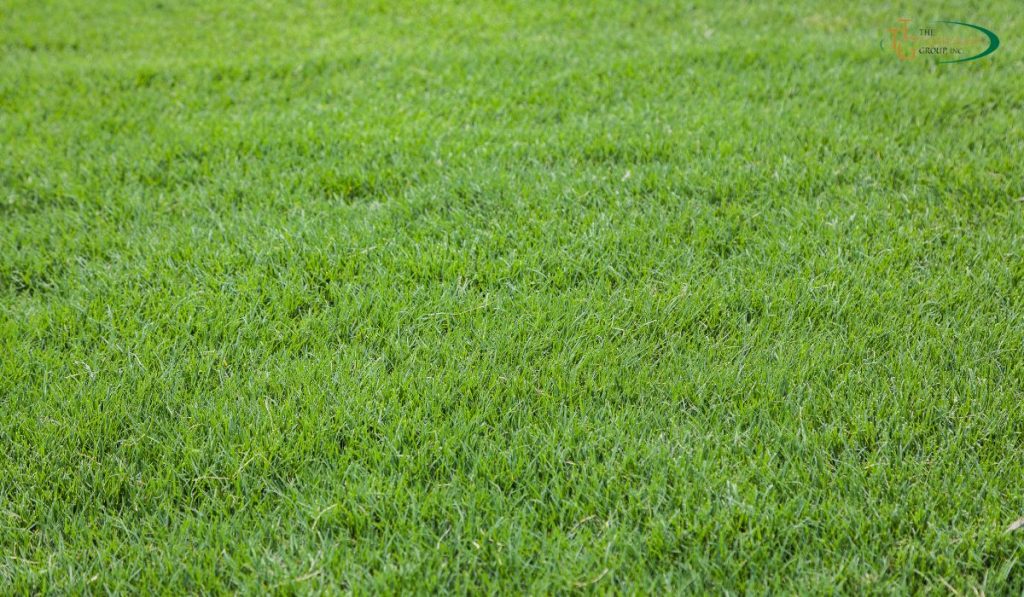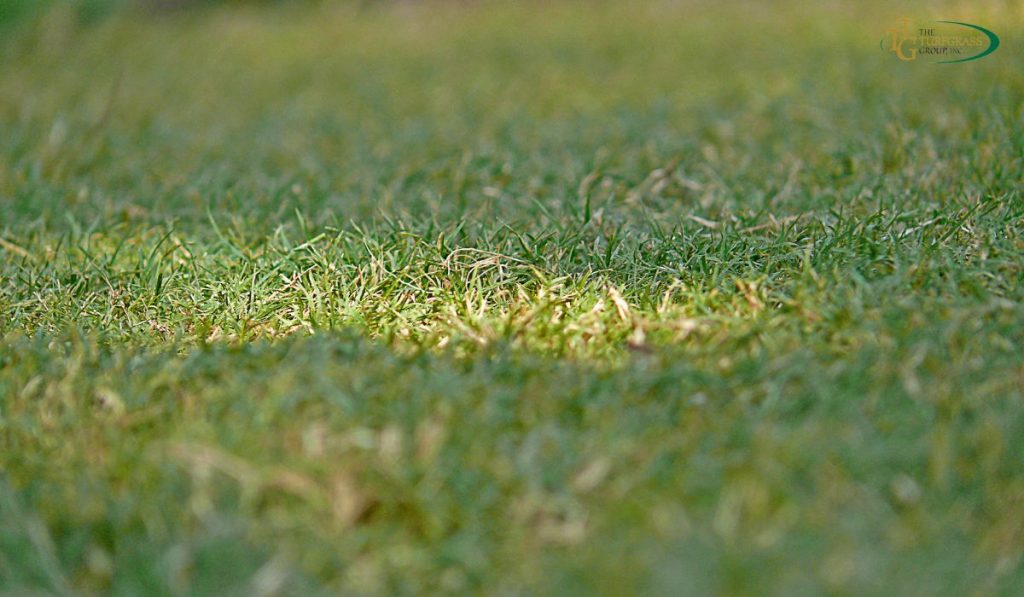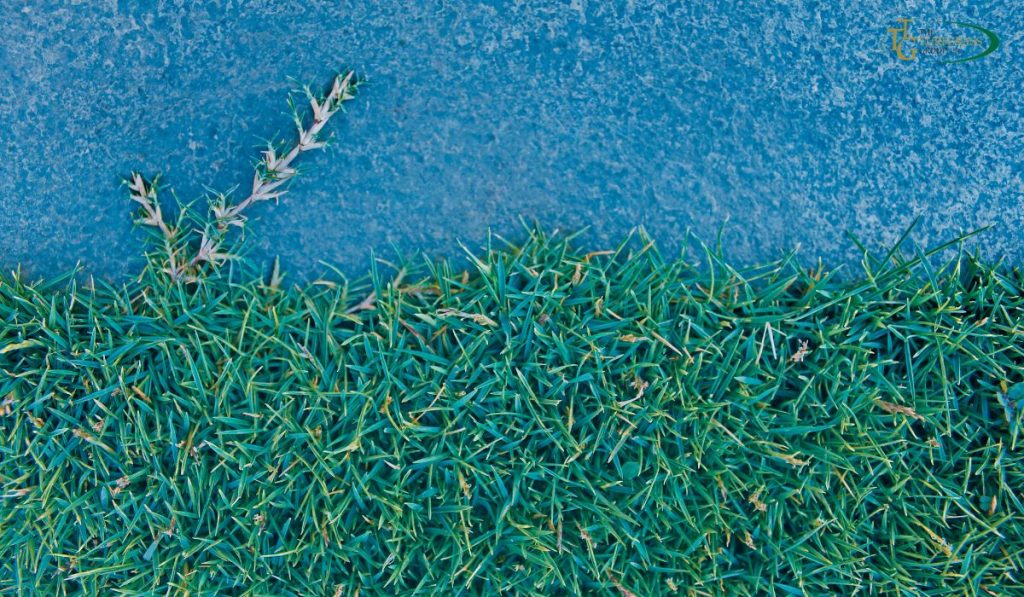
Bermuda grass, known for its resilience and rapid growth, can spread naturally and fill in bare spots in your lawn.
Understanding the spreading habits and factors influencing Bermuda grass growth can help you optimize its spread and achieve a lush and healthy lawn.
Here are some key insights and strategies to consider:
The Spreading Habits of Bermuda Grass
Bermuda grass spreads through both above-ground stolons and below-ground rhizomes.
Stolon are parallel stems that grow above the soil surface, while rhizomes are underground stems.
These spreading mechanisms enable Bermuda grass to send out new shoots and establish new growth areas, gradually filling in open spaces in your lawn.
Factors That Influence Bermuda Grass Spread
Several factors can impact the spread of Bermuda grass.
Sunlight exposure plays a significant role, as Bermuda grass thrives in full sun and may struggle to spread in shaded areas.
Soil quality, including nutrient content and drainage, also affects its growth and spread.
Proper soil preparation and regular fertilization can support Bermuda grass spread.
Effective Strategies To Get Bermuda Grass To Spread Naturally
If you want to encourage Bermuda grass to spread naturally, there are a few practical strategies to implement:
- Mowing Height: Maintain a proper mowing height, typically around 1.5 to 2 inches, to stimulate lateral growth and encourage spreading.
- Overseeding: Overseeding with Bermuda grass seed can help fill in bare spots and promote new growth.
Ensure good seed-to-soil contact and provide adequate moisture for germination.

- Watering and Irrigation: Watering deeply and infrequently, allowing the soil to dry between watering sessions, can promote more vigorous root growth and encourage Bermuda grass to spread.
- Fertilization: A balanced fertilizer formulated explicitly for Bermuda grass can provide essential nutrients for growth and spread.
Tips for Bermuda Lawn Care and Maintenance
To maintain a healthy Bermuda grass lawn and support its spreading abilities, consider the following tips:
- Regularly mow your property at the recommended height to prevent scalping and promote lateral growth.
- Aerate your lawn annually to improve soil drainage and reduce thatch buildup, allowing Bermuda grass to spread more quickly.
- Conduct regular soil testing to ensure proper nutrient levels and adjust fertilization accordingly.
- Control weeds through regular manual removal or targeted herbicide applications to prevent competition with Bermuda grass.
- Provide adequate irrigation, especially during periods of drought, to support Bermuda grass growth and spread.
Take-Away on How Bermuda Grass Grows
Bermuda grass is a resilient and fast-growing turfgrass that spreads naturally through above-ground stolons and below-ground rhizomes.
By understanding its spreading habits, optimizing lawn care practices, and implementing effective strategies, you can encourage Bermuda grass to spread and fill in bare spots, resulting in a lush and thriving lawn.
Conclusion
Bermuda grass possesses natural spreading abilities that can be further enhanced through proper lawn care and maintenance.
By implementing strategies such as proper mowing, overseeding, appropriate watering, and regular fertilization, you can promote the spread of Bermuda grass and achieve a beautiful, resilient lawn.
FAQs
Will Bermuda spread on its own?
Yes, Bermuda grass has a natural ability to spread through its above-ground stolons and below-ground rhizomes. With favorable growing conditions, Bermuda grass can fill in bare spots and gradually be scattered to cover larger lawn areas.
Will Bermuda spread to bare spots?
Yes, Bermuda grass can spread to bare spots if given the right conditions for growth. Overseeding with Bermuda grass seed and providing proper soil preparation, sunlight, and moisture can encourage the grass to fill bare areas.
What are the downsides of Bermuda grass?
While Bermuda grass has many desirable qualities, such as its ability to withstand heat and drought, there are some downsides to consider. Bermuda grass can become invasive and spread aggressively, making it difficult to contain within specific areas. It may also require more frequent mowing and maintenance than other grass types.
Will Bermuda grass take over my lawn?
Bermuda grass can become dominant in a lawn if not correctly managed. Its spreading nature allows it to take over open spaces and outcompete other grass species gradually. Regular mowing, edging, and maintenance practices can help prevent Bermuda grass from completely taking over your lawn.
Will Bermuda choke out other grass?
Bermuda grass has a strong growth habit and can choke out other grass species if uncontrolled. Regular maintenance and targeted management practices are essential to prevent Bermuda grass from overtaking other grasses in your lawn.
Will Bermuda grass grow on top of dirt?
Yes, Bermuda grass can grow on top of dirt if the soil provides the necessary nutrients, proper drainage, and sufficient sunlight. However, preparing the ground adequately before planting or overseeding is essential to ensure successful growth.
What happens if you don’t scalp Bermuda grass?
Scalping Bermuda grass refers to cutting it very short, usually at the beginning of the growing season. Not scalping Bermuda grass may result in a slightly taller lawn, but it should not significantly affect its overall health or spreading abilities.
What happens if you let Bermuda grass grow?
If you let Bermuda grass grow without regular maintenance, it can become long and untidy. It may also develop thatch, a layer of organic material that accumulates above the soil surface, hindering proper growth and spread. Regular mowing and maintenance practices are essential to keep Bermuda grass in optimal condition.
How do you force Bermuda to spread?
To encourage Bermuda grass to spread, you can implement several strategies. Proper mowing height, overseeding, regular watering, and appropriate fertilization can all support the spreading Bermuda grass. Additionally, aeration and dethatching can help create favorable conditions for growth and spread.
What grass is better than Bermuda?
The choice of grass depends on various factors such as climate, soil conditions, and personal preferences. Some grasses considered alternatives to Bermuda grass include Zoysia grass, St. Augustine grass, and Centipede grass. Each grass type has advantages and considerations, so it’s essential to research and select the one that best suits your needs.

Why would anyone want Bermuda grass?
Bermuda grass is desirable for several reasons. It has excellent heat and drought tolerance, ideal for warmer climates. Bermuda grass can withstand heavy foot traffic, making it suitable for sports fields and high-use areas. It also has a rapid growth rate and spreads quickly, providing good coverage and filling bare spots.
Why do people want Bermuda grass?
People often choose Bermuda grass for its durability, resilience, and ability to withstand various environmental conditions. Its fast growth and spreading habits make it famous for lawns, parks, golf courses, and athletic fields. Additionally, when properly maintained, Bermuda grass offers an attractive, dense, and lush appearance.
Can I throw Bermuda grass seed down?
While throwing Bermuda grass seed down is possible, preparing the soil properly before seeding is generally recommended. Good seed-to-soil contact is crucial for germination and establishment. Raking or lightly tilling the soil and removing debris can create a better environment for Bermuda grass seed to take root and grow.
Do you have to water Bermuda grass a lot?
Bermuda grass requires regular watering, especially during dry weather or drought. However, it is essential to follow a deep and infrequent watering schedule. Watering deeply allows the roots to grow deeper into the soil, promoting a stronger and more resilient lawn. Watering too frequently can lead to shallow root growth and increased susceptibility to stress.
How long does it take for Bermuda grass to establish?
The establishment period for Bermuda grass can vary depending on temperature, moisture, and soil conditions. On average, Bermuda grass can germinate around 2 to 4 weeks and begin establishing its root system. Bermuda grass may take several months to install and provide good coverage fully.
How many times a week should you cut Bermuda grass?
The frequency of mowing Bermuda grass can vary depending on its growth rate and desired height. During peak growing season, mowing Bermuda grass at least once a week is generally recommended. However, adjust the frequency based on its growth rate and aim to remove no more than one-third of the grass height each time.
What height should I cut my Bermuda grass in the summer?
During the summer, it is recommended to maintain a slightly higher mowing height for Bermuda grass to provide shade and protect the soil from excessive heat. Set your mower blades to cut Bermuda grass at around 1.5 to 2 inches during the summer months to promote healthier growth and help retain moisture.
Can you water Bermuda grass every day?
Watering Bermuda grass every day is generally not recommended. Bermuda grass thrives with deep watering but benefits from permitting the soil to dry out between watering sessions. Watering deeply and infrequently, about 1 inch per week, is sufficient for most established Bermuda grass lawns. Adjust the watering frequency based on weather conditions and the grass’s moisture needs.
What is the most aggressive grass?
Bermuda grass is known for its negative growth and spreading habits, making it one of the most aggressive turfgrasses. Its ability to fill bare spots and rapidly establish new growth areas contributes to its reputation as a resilient and vigorous grass species.
Should I get Zoysia or Bermuda?
The choice between Zoysia and Bermuda grass depends on various factors such as climate, soil conditions, maintenance preferences, and intended use. Both types of grass have their advantages and considerations. Zoysia grass offers better shade tolerance and a denser growth pattern, while Bermuda grass excels in heat and drought tolerance and has a faster growth rate. Consider your specific needs and consult a local expert to determine the best choice for your lawn.
What is the softest grass to walk on?
While Bermuda grass is known for its durability and resilience, it may not be the softest grass to walk on. Some grass types, such as fine fescue or Kentucky bluegrass, are often considered more peaceful and comfortable underfoot. However, individual preferences may vary, and factors such as proper maintenance, irrigation, and soil conditions can also impact the softness of the grass.
What is the best month to plant Bermuda grass seed?
The best time to plant Bermuda grass seed is during the late spring to early summer when soil temperatures consistently reach around 65°F (18°C) or higher. This period provides optimal conditions for Bermuda grass seed germination and establishment. Check the local climate and growing recommendations for your specific region.
Can you bring back dead Bermuda grass?
In some cases, reviving damaged or dormant Bermuda grass is possible. Proper lawn care practices such as dethatching, aerating, fertilizing, and regular watering can help stimulate new growth and restore the health of Bermuda grass. However, severe damage or prolonged dormancy may require reseeding or resodding to rejuvenate the lawn.
What does Bermuda grass look like when it first comes up?
When Bermuda grass first comes up, it appears as small, thin, and light green shoots emerging from the soil. The young shoots may be slightly curly and have a delicate appearance. As the grass matures, it becomes vibrant green with a fine-textured, blade-like appearance.
What temperature kills Bermuda grass?
Bermuda grass can tolerate a wide range of temperatures, including both cold and hot conditions. However, prolonged exposure to freezing temperatures or extreme heat can damage or kill Bermuda grass. Generally, temperatures below 15°F (-9°C) or above 110°F (43°C) can pose risks to Bermuda grass health and survival.
What happens if you cut Bermuda grass too short?
Cutting Bermuda grass too short, also known as scalping, can lead to various issues. Scalping weakens the grass and makes it more vulnerable to stress, diseases, and weed invasion. It can also hinder the grass’s ability to photosynthesize and produce food, resulting in slower growth and a less vibrant appearance. It is important to follow recommended mowing heights to maintain Bermuda grass health.
Does Bermuda grass grow in 100-degree weather?
Bermuda grass is known for its excellent heat tolerance and can thrive in high-temperature conditions. It can continue to grow and remain green in temperatures exceeding 100°F (38°C). However, during extreme heat, Bermuda grass may enter a dormant state to conserve energy and water. Once temperatures become more favorable, Bermuda grass will resume active growth.
What are the runners on top of Bermuda grass?
The runners on top of Bermuda grass are the above-ground stolons. These horizontal stems grow along the soil surface, producing nodes from which new shoots emerge. The runners allow Bermuda grass to spread laterally and establish new growth areas.
What time of day should I water Bermuda grass?
It is generally recommended to water Bermuda grass in the early morning, preferably between 4 a.m. and 10 a.m. Watering at this time allows the grass blades to dry out before evening, reducing the risk of disease development. Avoid watering in the afternoon & evening when prolonged moisture on the grass can lead to fungal issues.
How long does Bermuda grass live?
Bermuda grass is a perennial grass species that can live for several years under favorable conditions. With proper care and maintenance, Bermuda grass can persist for many years, continuously spreading and regenerating new growth areas.